
One Model to Rig Them All: VAST/Tripo Introduces UniRig for Diverse, Automated 3D Rigging
Leveraging autoregressive models and a novel tokenization scheme, UniRig delivers state-of-the-art performance across diverse characters and objects, poised to break the 3D animation bottleneck.

The landscape of 3D content creation is exploding. Fueled by both sophisticated traditional workflows and the rapid rise of AI-powered generation tools (like our own at Tripo), the demand for high-quality 3D assets is surging. Yet, a critical bottleneck persists: rigging. Transforming a static 3D mesh into an animatable character with a skeleton and skinning weights remains a complex, time-consuming, and often manual process requiring significant expertise.
Existing automated solutions offer partial relief but often fall short. Template-based methods excel within their predefined structures (like standard bipeds) but lack the flexibility for the sheer diversity of models being created today. Template-free approaches offer more adaptability but frequently struggle with generating topologically valid skeletons or require complex post-processing, hindering practical adoption.
Today, Tripo is excited to introduce UniRig, a novel, unified framework for automatic skeletal rigging designed to overcome these limitations. As detailed in our latest research paper "One Model to Rig Them All: Diverse Skeleton Rigging with UniRig", UniRig presents a powerful model capable of generating high-quality skeletal rigs for an unprecedented variety of 3D models – from humans and animals to complex fictional characters and even inorganic structures.

The UniRig Approach: Autoregressive Prediction and Novel Tokenization
At its core, UniRig leverages the power of large autoregressive models, akin to those driving advancements in language and image generation. Instead of predicting pixels or words, UniRig predicts the structure of a 3D skeleton, joint by joint. This sequential prediction process is key to ensuring the generation of topologically valid skeletons.
A critical design enabling this is our Skeleton Tree Tokenization method. Representing a hierarchical skeleton structure with complex joint interdependencies as a linear sequence suitable for a transformer is non-trivial. Our tokenization scheme efficiently encodes:
- Joint Coordinates: Discretized spatial locations of bone joints.
- Hierarchical Structure: Explicit parent-child relationships, ensuring valid tree structures.
- Bone Semantics: Special tokens identify bone types (e.g., standard template bones like Mixamo, dynamic spring bones for hair/cloth simulation), crucial for downstream tasks and realistic animation.
This optimized tokenization (reducing sequence length by ~30% compared to naive approaches) allows the autoregressive model (based on the OPT architecture) to learn the underlying patterns of skeletal structures effectively, conditioned on the input mesh geometry processed by a shape encoder.
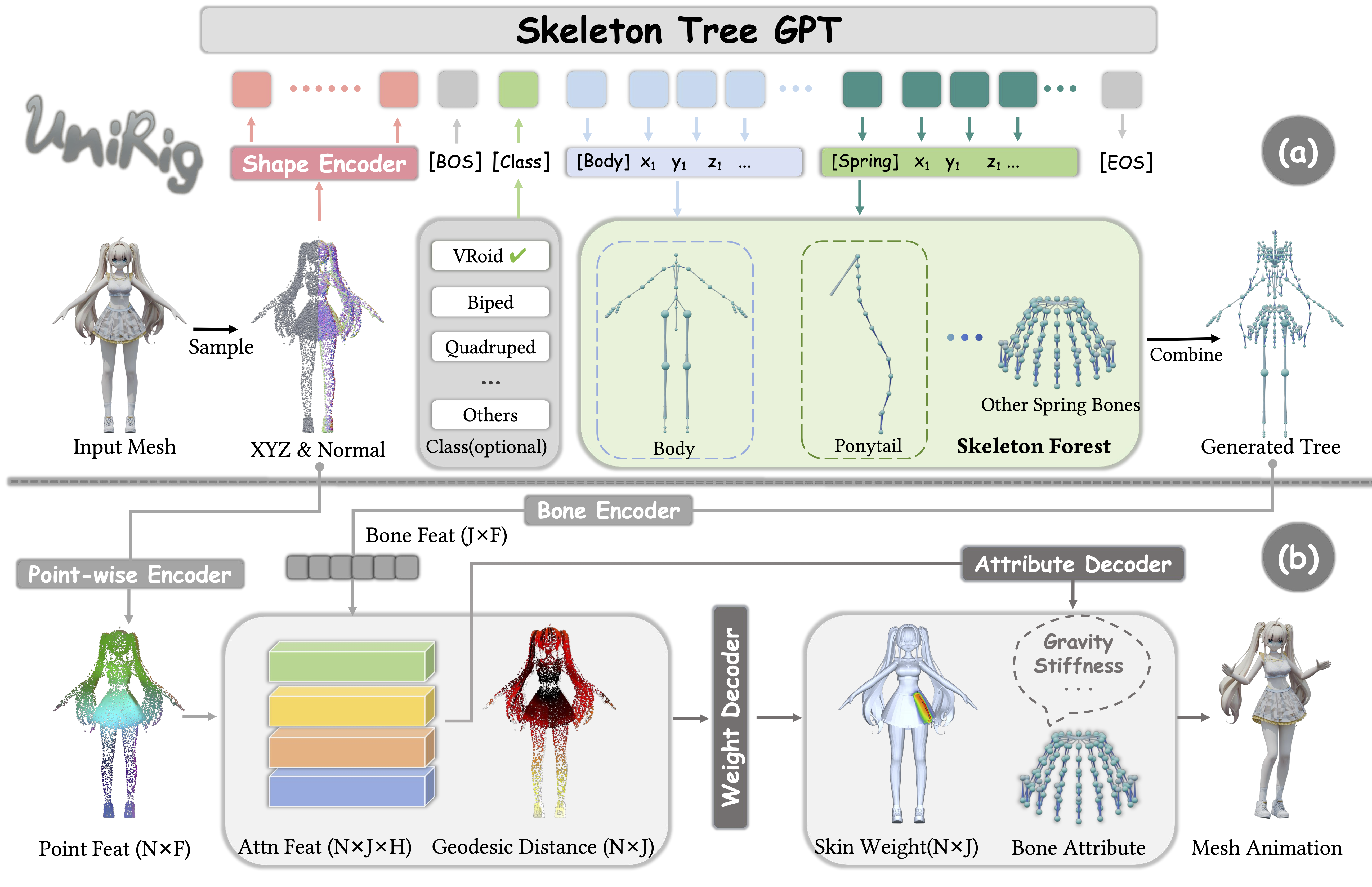
Beyond the Skeleton: Accurate Skinning and Attributes
Once a valid skeleton is predicted, UniRig employs a Bone-Point Cross Attention mechanism to predict per-vertex skinning weights. This module effectively captures the complex influence of each bone on the surrounding mesh surface, incorporating geometric features from the mesh and skeleton, crucially augmented by geodesic distance information for improved spatial awareness.
Furthermore, UniRig predicts bone-specific attributes (like stiffness or gravity influence for spring bones), enabling more physically plausible secondary motion directly from the learned parameters, evaluated via differentiable physics simulation during training for enhanced realism.
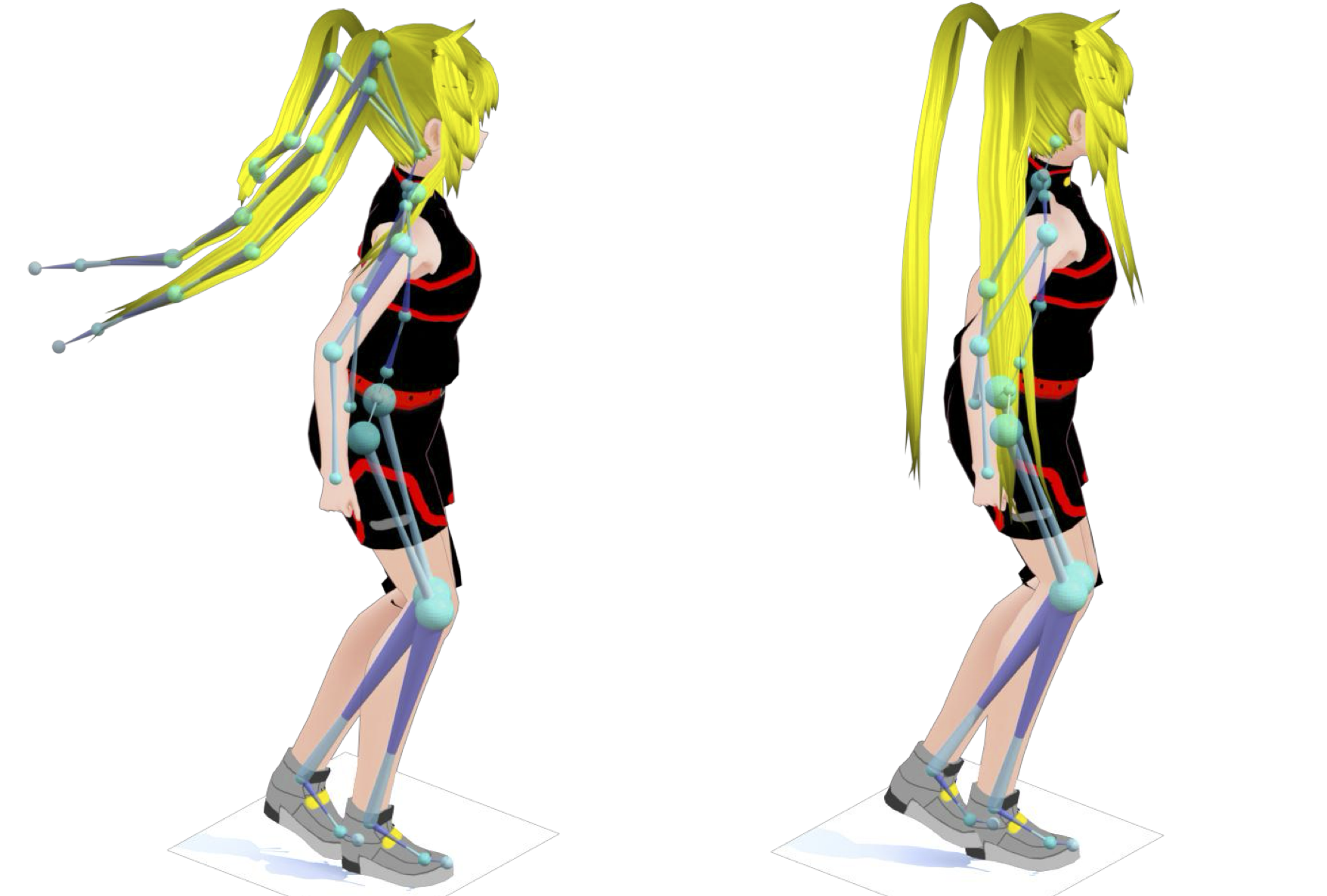
Rig-XL: Fueling Generalization with Data
A model is only as good as its data. To train UniRig for broad applicability, we curated Rig-XL, a new large-scale dataset containing over 14,000 diverse, rigged 3D models. Derived and meticulously cleaned from resources like Objaverse-XL, Rig-XL spans multiple categories (bipeds, quadrupeds, birds, insects, static objects, etc.) and provides the necessary scale and variety to train a truly generalizable rigging model. We complemented this with a VRoid dataset to refine performance on detailed anime-style characters with spring bones.
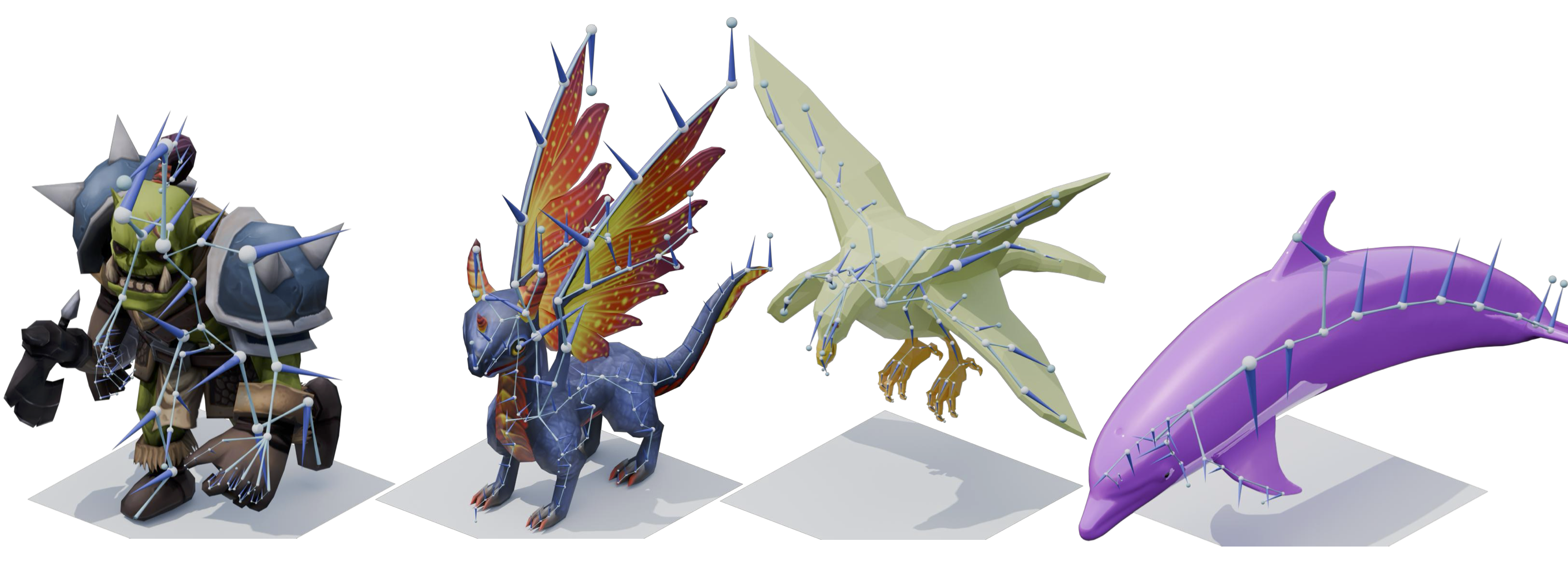
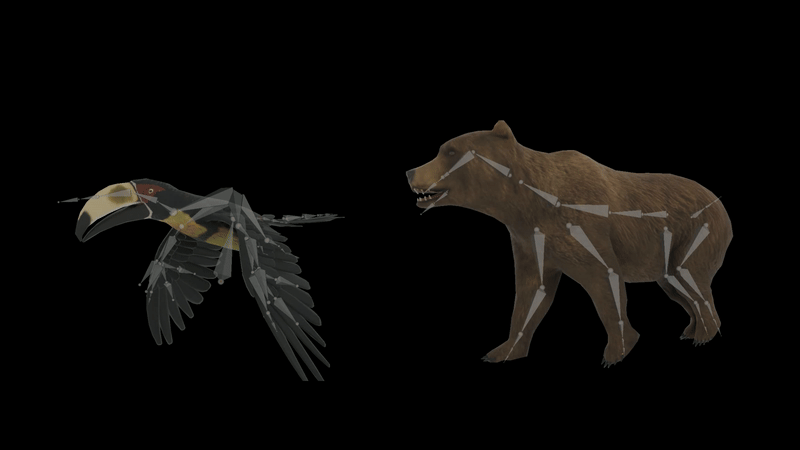
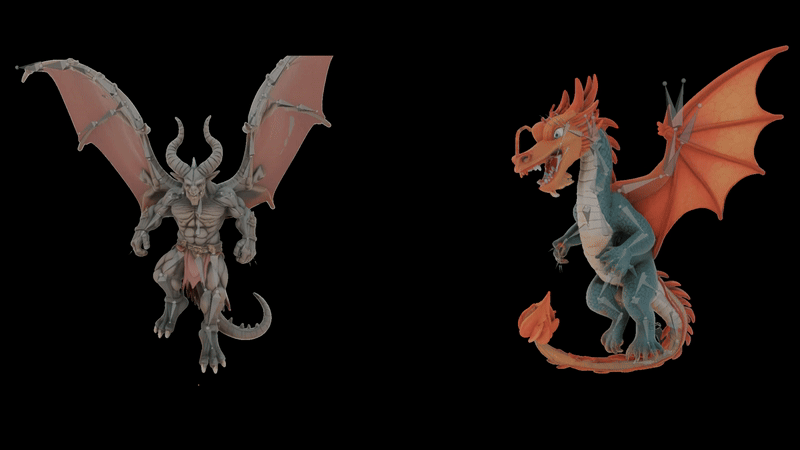
State-of-the-Art Performance
UniRig significantly advances the state-of-the-art in automatic rigging:
- Accuracy: Achieves dramatic improvements over existing academic and commercial methods, showing a 215% improvement in rigging accuracy (joint prediction) and a 194% improvement in motion accuracy (mesh deformation under animation) on challenging datasets.
- Versatility: Demonstrates robust performance across a wide spectrum of categories – detailed characters, animals, complex organic and inorganic shapes – where previous methods often failed.
- Robustness: Generates topologically sound skeletons and plausible skinning weights, leading to superior animation quality compared to previous academic methods and popular commercial tools.
- Efficiency: The optimized tokenization and model architecture lead to practical inference times (1-5s).
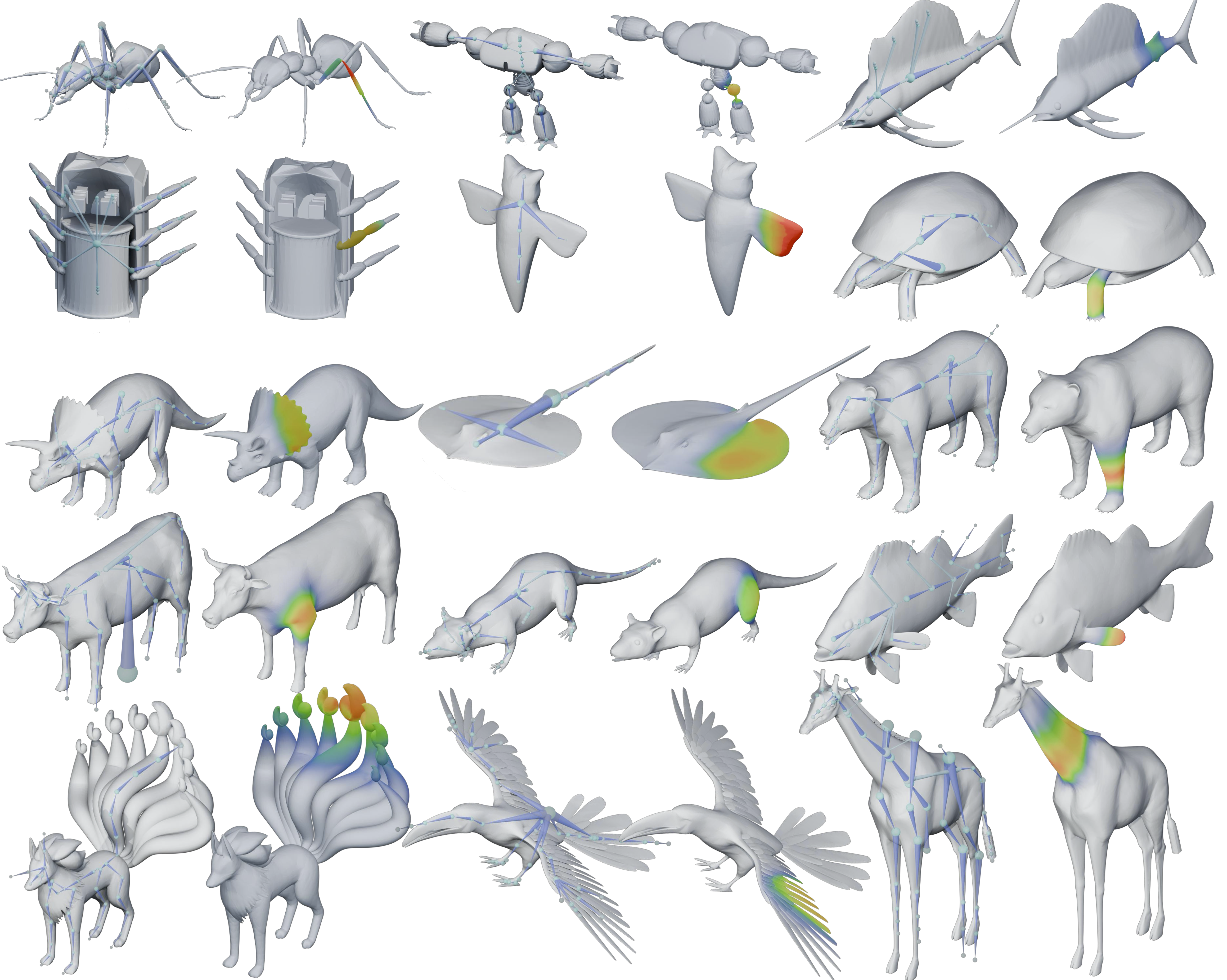
Why UniRig Matters
UniRig represents a significant step towards solving the rigging bottleneck in modern 3D pipelines. By providing a fast, accurate, and versatile automated solution, it has the potential to:
- Accelerate Production: Reduce the time and expertise needed for rigging, freeing up artists for creative tasks.
- Enable New Workflows: Seamlessly integrate with the output of AI-driven 3D model generation, making vast libraries of generated content readily animatable.
- Enhance Interactivity: Support human-in-the-loop refinement; users can edit the predicted skeleton (e.g., add/remove bones, adjust topology) and regenerate the rig, blending automation with artistic control.
- Democratize Animation: Lower the barrier to entry for creating animated 3D content.
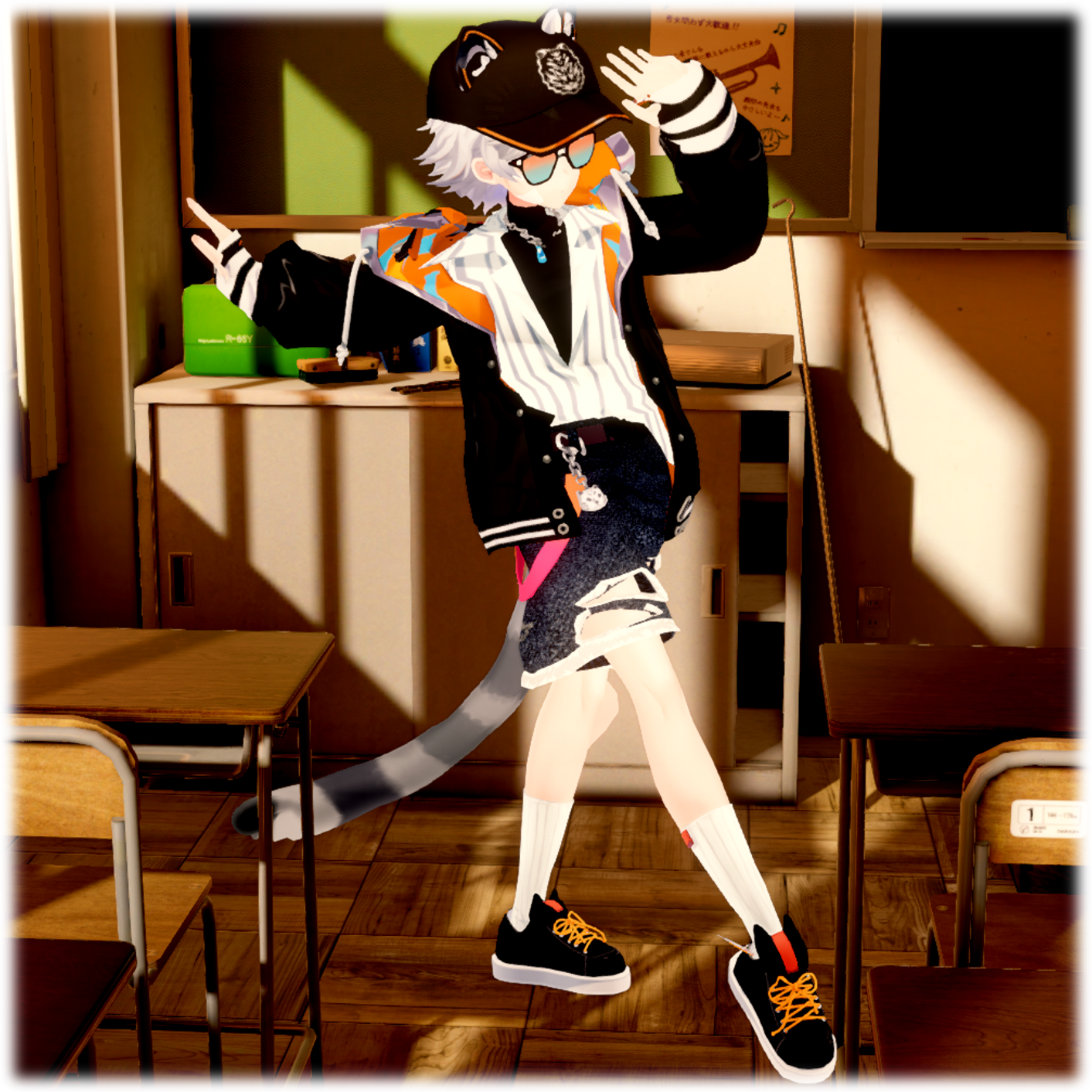
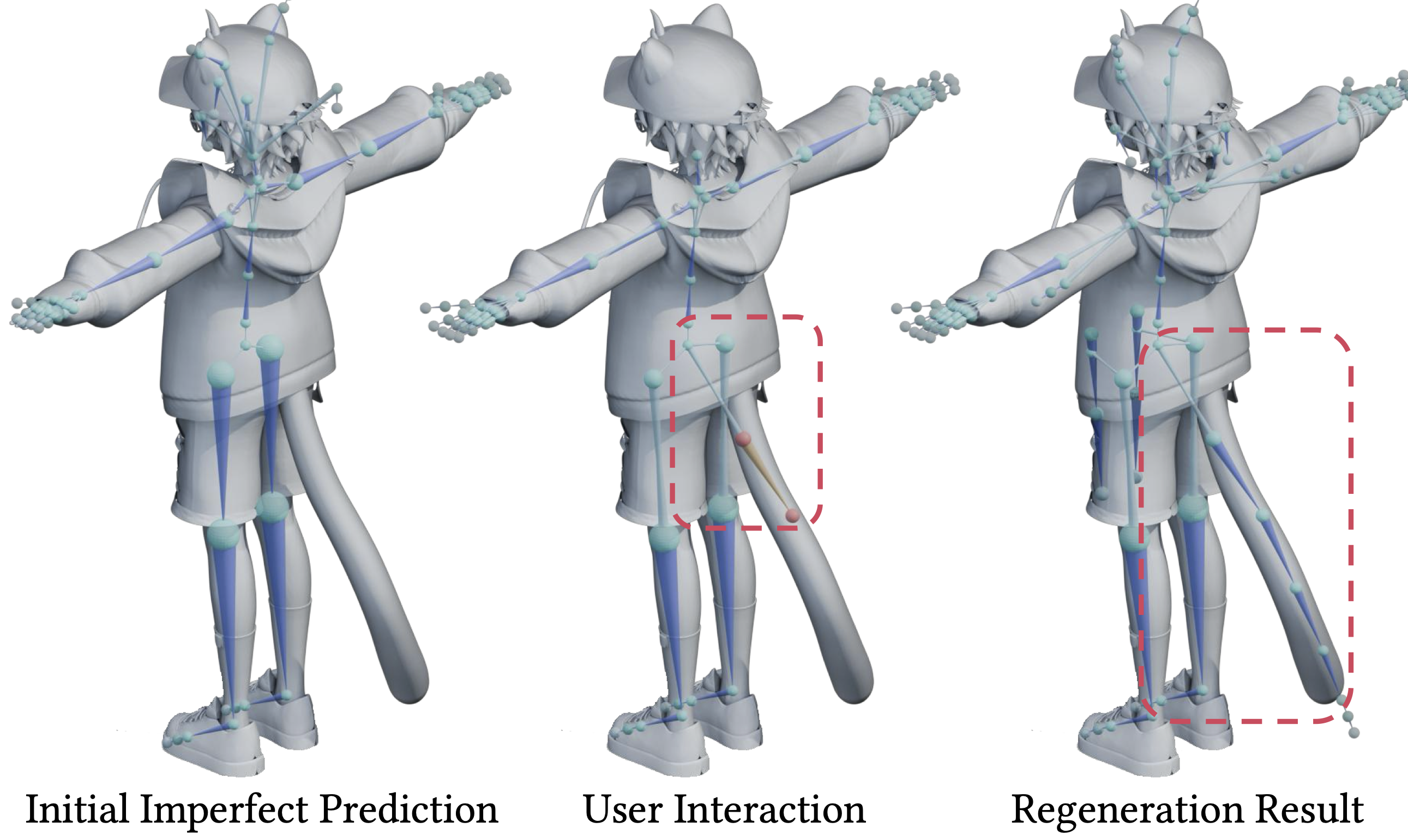
Looking Ahead: Open Source Release
In line with Tripo's commitment to advancing the field, we are open-sourcing UniRig. We believe this technology can significantly benefit the creator community and foster further innovation.
We invite you to dive deeper:
UniRig is more than just an algorithm; it's a foundational piece for the next generation of 3D content creation, making animation more accessible, efficient, and versatile than ever before.